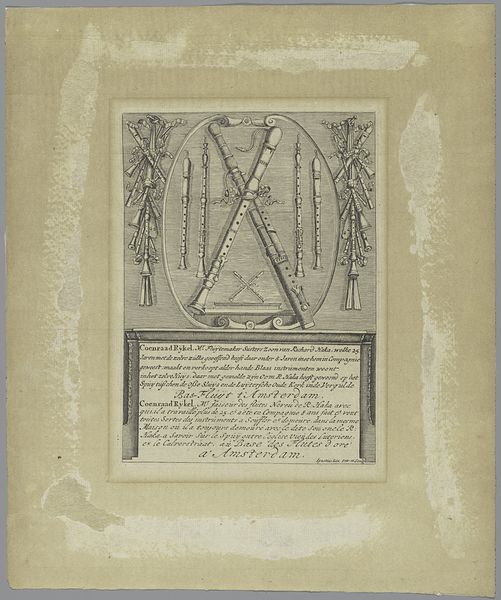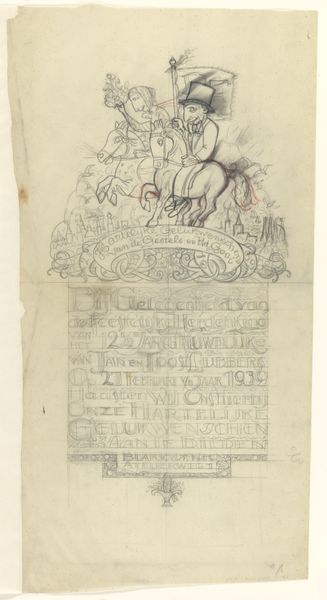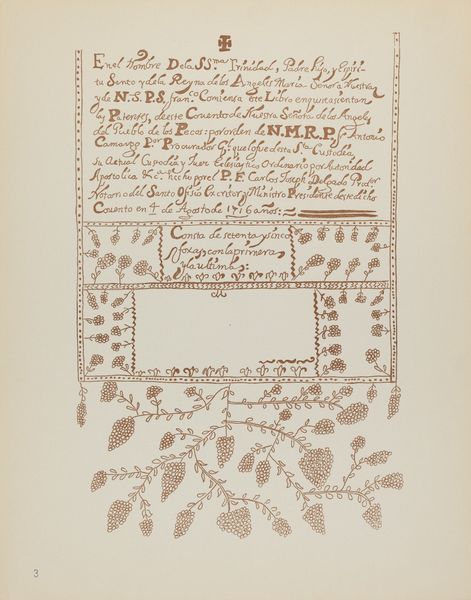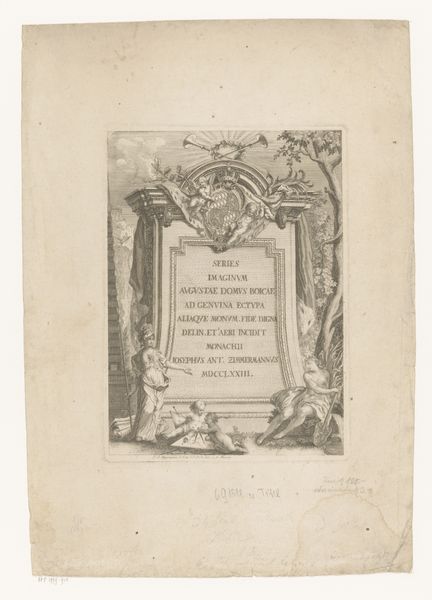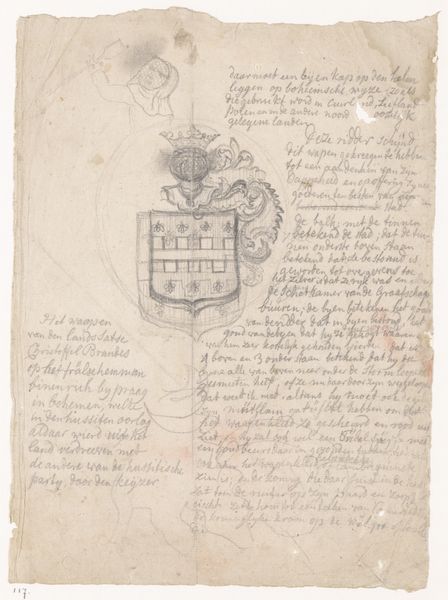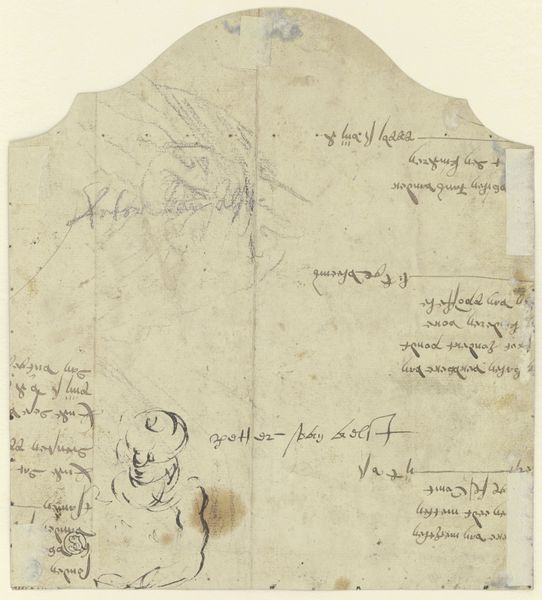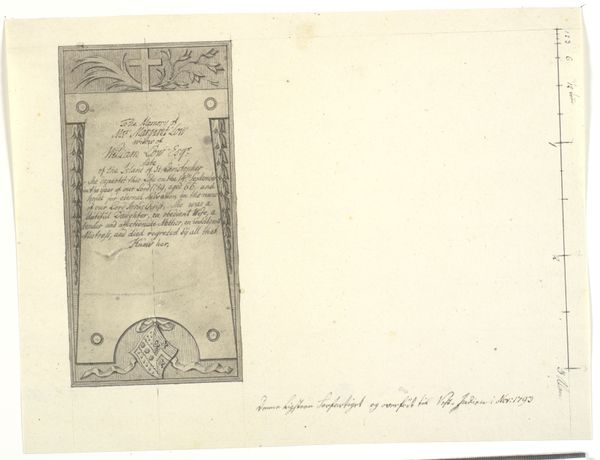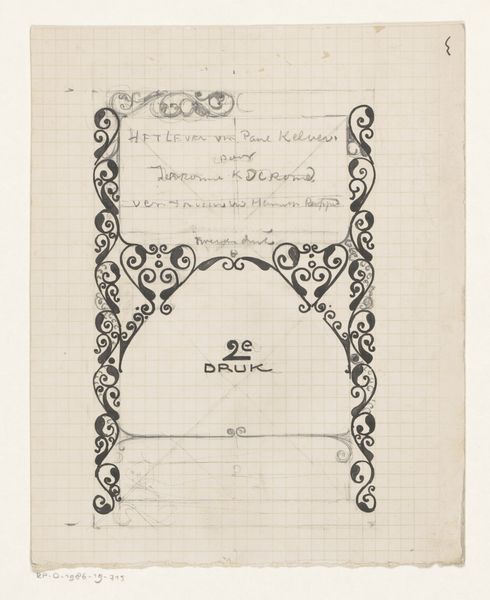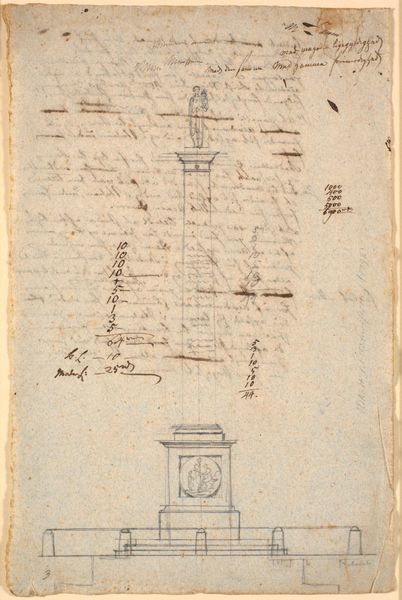
drawing, coloured-pencil, paper, dry-media, ink, pastel
#
portrait
#
drawing
#
coloured-pencil
#
16_19th-century
#
paper
#
dry-media
#
ink
#
coloured pencil
#
romanticism
#
pastel
#
history-painting
Copyright: Public Domain
Hilarius Thoma drafted this gravestone design in 1882 with watercolor and pencil. At its apex, a skull atop a laurel wreath reminds us of mortality, a memento mori, while below, a cross and shepherd's crook symbolize faith and guidance. The skull, a potent symbol of death and decay, has appeared across cultures and epochs, from ancient Roman mosaics to Renaissance paintings. We find it not just as a morbid emblem but as a stark reminder of life's fragility. Consider the "vanitas" paintings of the Dutch Golden Age, where skulls, decaying fruit, and extinguished candles speak to the transience of earthly pleasures. These symbols tap into our deepest anxieties about death, compelling us to confront our mortality. This image speaks to our collective unconscious, where symbols evoke primal fears and existential questions. The cyclical recurrence of the skull motif reminds us that symbols are never static, always evolving. They echo and transform through time.
Comments
No comments
Be the first to comment and join the conversation on the ultimate creative platform.


